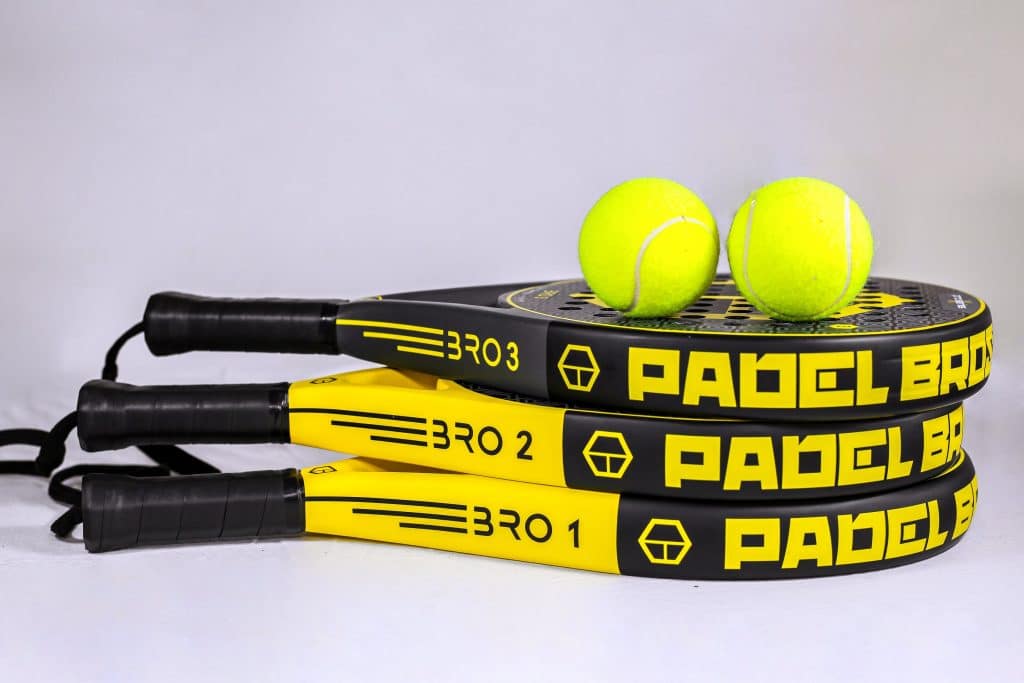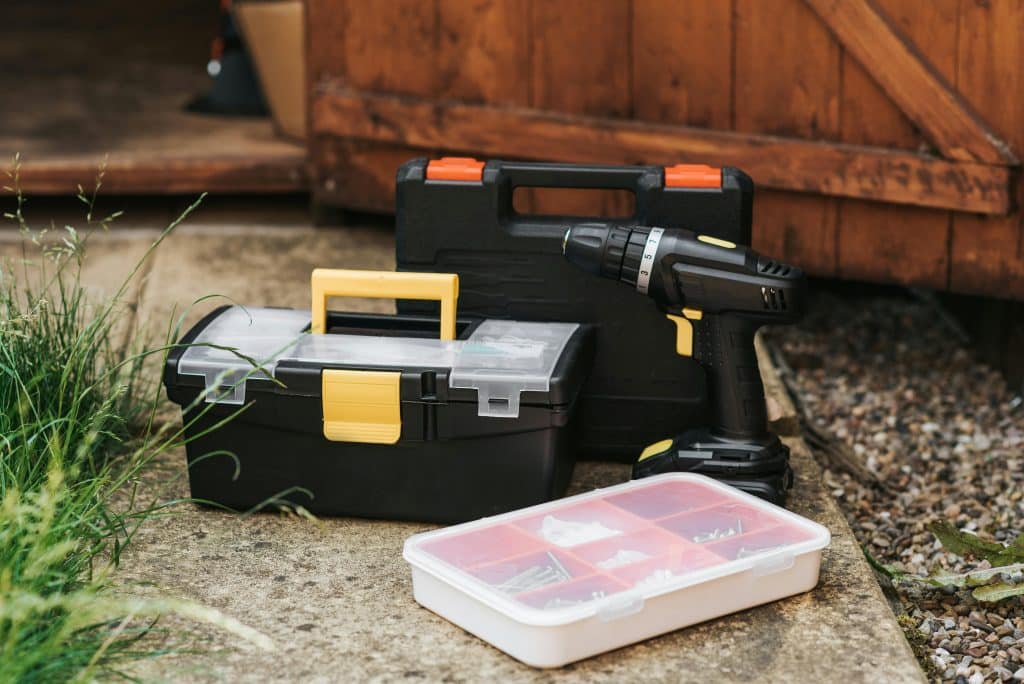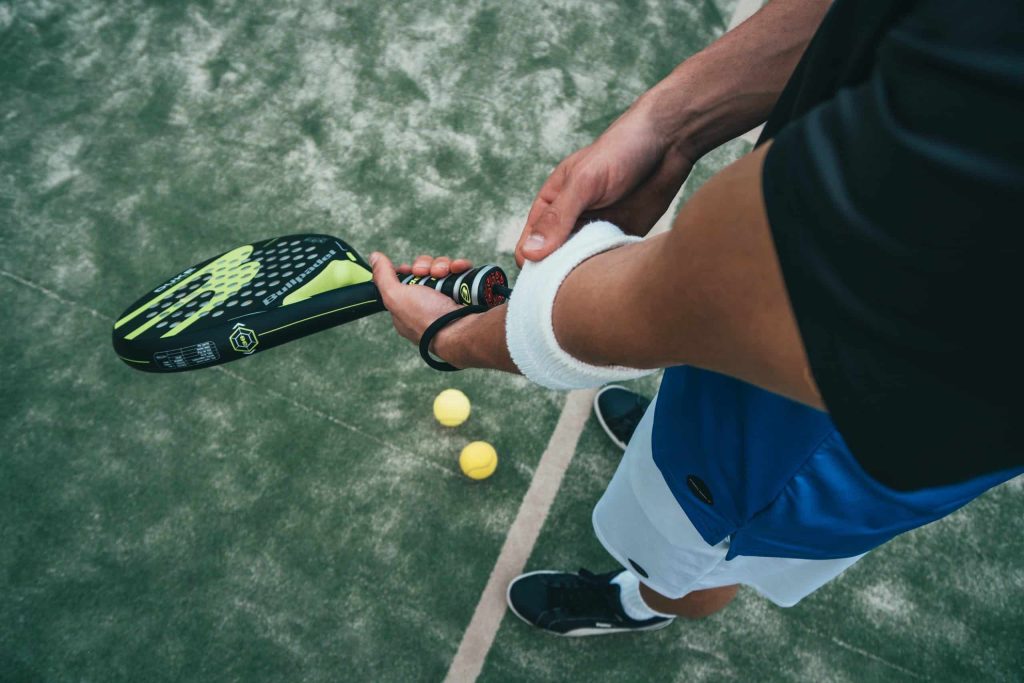Gearing up for success on the padel court starts with the right racket. Whether you’re a seasoned player or just starting, choosing the perfect padel rackets can elevate your game. In this comprehensive guide, we’ll dive into everything you need to know to make an informed decision. We’ve covered you, from understanding the different racket materials to finding the ideal balance between power and control. Look out for expert tips on selecting the best grip size and shape for your hand, and uncover the secrets to maneuverability and spin. Whether you’re seeking precision, power, or a blend of both, we’ll walk you through the key features to consider before purchasing. So, get ready to unleash your full potential on the court with the ultimate padel racket that perfectly suits your playing style and preferences.
Choosing the Right Padel Rackets
Selecting the right padel racket is crucial for your performance on the court. With a wide range of options available, it’s essential to consider your playing style, skill level, and personal preferences before deciding. Whether you prefer a racket that offers maximum power for aggressive shots or one that provides precise control for finesse plays, understanding your needs will guide you in selecting the perfect padel racket. Additionally, factors such as weight, balance, and grip size significantly determine the most suitable racket for your game. By carefully evaluating these aspects, you can ensure that your chosen racket complements your strengths and helps improve your weaknesses, ultimately enhancing your overall performance on the padel court.

When considering the right padel racket, assessing your playing style and skill level is essential. If you’re an aggressive player who relies on powerful shots, a racket designed to maximize power and speed may best fit your game. On the other hand, if you prioritize control and precision in your shots, a racket focusing on maneuverability and accuracy might better suit your playing style. Additionally, beginners may benefit from rackets that offer a balance of power and control, providing versatility as they develop their skills and techniques on the court. By understanding your unique needs and preferences, you can narrow the options and make an informed decision when selecting your ideal padel racket.
In addition to playing style and skill level, personal preferences also play a crucial role in choosing the right padel racket. Factors such as aesthetics, brand reputation, and previous experiences with specific racket models can influence your decision-making process. Some players may prefer a particular racket brand due to its reputation for quality and innovation, while others may prioritize the design and aesthetics of the racket. Considering these personal preferences alongside technical specifications can ensure that you have a racket that performs well on the court and resonates with your tastes and preferences.
Understanding Padel Racket Materials and Technologies
The materials used in padel racket construction significantly impact the performance and feel of the racket. Understanding the various racket materials and technologies can provide valuable insights when selecting the most suitable option for your game. Typically, padel rackets are crafted using a combination of materials such as carbon fiber, fiberglass, and foam cores, each offering unique power, control, and comfort benefits. Additionally, advancements in racket technologies, such as vibration-dampening systems and enhanced sweet spot designs, contribute to improved performance and playing experience on the padel court.
Carbon fiber is famous for padel racket construction due to its exceptional strength and stiffness. Rackets incorporating carbon fiber offer increased power and stability, allowing players to generate greater racket head speed and impact force during shots. This material is known for its responsiveness, providing players with the necessary feedback and control to execute precise shots confidently. Additionally, carbon fiber’s lightweight nature contributes to maneuverability, enabling quick transitions between shots and movements on the court. Players can expect a balance of power, control, and responsiveness when considering a padel racket with carbon fiber construction, making it a versatile choice for various playing styles and skill levels.
Fiberglass is another commonly used material in padel racket manufacturing, and it is known for its durability and impact resistance. Rackets featuring fiberglass components exhibit enhanced shock absorption properties, reducing vibrations and minimizing the risk of arm fatigue during intense gameplay. Fiberglass in racket construction contributes to a comfortable and forgiving feel, making it an ideal choice for players seeking a racket that offers a blend of power and comfort. Additionally, the inherent flexibility of fiberglass allows for greater ball pocketing, providing players with improved touch and feel when executing delicate shots and maneuvers on the court. When exploring padel rackets with fiberglass components, players can expect a balance of power, comfort, and control, making it a versatile option for a wide range of playing styles.
Foam cores have gained popularity in padel racket design, delivering enhanced playability and comfort on the court. Rackets equipped with foam cores exhibit superior shock absorption properties, reducing the impact of ball contact and minimizing vibrations transmitted to the player’s arm. This results in a more comfortable and arm-friendly playing experience, especially during extended matches or intense rallies. Additionally, foam cores contribute to a dampened feel, providing players with improved touch and precision when executing finesse shots and controlling the ball’s trajectory. Players considering padel rackets with foam cores can expect a focus on comfort, playability, and reduced risk of arm strain, making it an appealing choice for those prioritizing the overall playing experience on the court.
Advancements in racket technologies have led to integrating innovative features to enhance performance and comfort for Padel players. Vibration-dampening systems, such as specialized materials and construction techniques, are designed to minimize the transmission of vibrations from the racket to the player’s arm, reducing the risk of discomfort and fatigue during gameplay. Additionally, the incorporation of enhanced sweet spot designs expands the effective hitting area on the racket, providing players with a larger margin for error and improved consistency in shot execution. These technological advancements contribute to a more forgiving and responsive playing experience, offering players greater confidence and control over their shots on the padel court. By understanding the impact of these technologies on racket performance, players can make informed decisions when selecting a padel racket that aligns with their specific preferences and playing styles.
Padel Racket Weight and Balance: Finding Your Perfect Match
The weight and balance of a padel racket play a crucial role in determining its overall feel and performance on the court. When selecting a racket, it’s essential to consider how weight distribution and balance impact your ability to generate power, maneuver the racket, and maintain control during gameplay. Rackets are available in various weight classifications, ranging from light to heavy, each offering distinct advantages and considerations for players. Additionally, understanding the significance of racket balance, whether head-heavy, head-light, or evenly balanced, can provide valuable insights into how the racket behaves during different types of shots and movements on the padel court.
Lightweight padel rackets are favored for their maneuverability and quick swing speeds, making them ideal for players who prioritize speed and agility on the court. These rackets are well-suited for executing fast-paced shots, quick transitions between offensive and defensive plays, and rapid movements to cover the court. The reduced weight allows players to easily generate racket head speed, contributing to increased power and spin potential during shots. Additionally, lightweight rackets are less taxing on the arm and shoulder, making them popular for players seeking a comfortable and responsive playing experience. When considering a lightweight padel racket, players can expect enhanced maneuverability, speed, and reduced fatigue risk during extended gameplay sessions.

On the other hand, heavier padel rackets offer distinct advantages in terms of power, stability, and plow-through during shots. The additional mass of these rackets allows players to generate greater impact force, resulting in powerful, penetrating shots that can pressure opponents. The added weight contributes to stability and solidity, providing players with a more substantial feel during ball contact and maneuvering. While heavier rackets may require more effort to swing and maneuver, they offer enhanced power potential and control, making them suitable for players who prioritize strength and shot penetration in their gameplay. When exploring heavier padel rackets, players can expect increased power, stability, and the ability to dictate the game’s pace with authoritative shots.
In addition to weight considerations, the balance of a padel racket plays a pivotal role in its overall performance and feel. Rackets are categorized based on their balance point, which can be head-heavy, head-light, or evenly balanced. Head-heavy rackets place more mass toward the head of the racket, offering increased power potential and stability during shots. This balance configuration is well-suited for players seeking additional power and plow-through, particularly when executing aggressive shots and smashes. Conversely, head-light rackets distribute more mass toward the handle, promoting enhanced maneuverability and control. These rackets allow for quick and precise movements, making them suitable for players who prioritize agility and shot placement on the court. Evenly balanced rackets seek to strike a middle ground, providing a blend of power, control, and maneuverability for versatile gameplay. By understanding the impact of racket balance on playing characteristics, players can identify the most suitable configuration that aligns with their playing styles and preferences.
Grip Size and Shape: Enhancing Comfort and Performance
The grip of a padel racket is a critical component that directly impacts a player’s comfort, control, and overall performance on the court. Finding the right grip size and shape is essential for maintaining a secure and comfortable hold on the racket, allowing players to execute shots confidently and precisely. Additionally, a well-suited grip reduces the risk of hand fatigue and injuries, enabling players to focus on their gameplay without distraction. By understanding the significance of grip size and shape, players can optimize their comfort and performance, ultimately enhancing their experience on the padel court.
The appropriate grip size is crucial for ensuring a comfortable and secure hold on the padel racket. An ill-fitting grip can lead to discomfort, lack of control, and increased risk of injury, impacting a player’s ability to perform at their best. To determine the right grip size, players can measure the distance from the base of their palm to the tip of their ring finger, using this measurement to select the most suitable grip size. A grip that is too small may result in excessive hand tension and reduced control, while a grip that is too large can lead to difficulty maneuvering the racket and increased strain on the hand and wrist. Players can ensure a snug and comfortable fit by choosing a grip size that aligns with their hand measurements, promoting optimal control and stability during gameplay.
In addition to grip size, the shape of the racket grip also plays a significant role in enhancing comfort and performance. Racket grips are available in various shapes, including round, rectangular, and octagonal profiles, each offering distinct characteristics and benefits for players. The shape of a grip can influence how the racket feels in the player’s hand, impacting their ability to maintain a secure hold and execute shots with precision. Players may find that certain grip shapes better accommodate their hand size and playing style, providing a more natural and comfortable grip that promotes confidence and control on the court. By experimenting with different grip shapes and evaluating their impact on comfort and performance, players can identify the most suitable option that complements their preferences and playing needs.
When considering grip materials, players can choose synthetic and overgrip options to customize the feel and traction of their racket grip. Synthetic grips offer durability, moisture-wicking properties, and a consistent feel, providing players with a reliable grip surface that withstands extended use and varying playing conditions. Conversely, overgrips allow players to personalize the thickness, tackiness, and absorbency of their racket grip, enabling them to fine-tune the feel and comfort according to their preferences. Additionally, overgrips provide an economical way to maintain grip performance, allowing players to replace worn or damaged grips without replacing the entire handle. Players can tailor their racket grip to optimize comfort, control, and performance on the padel court by selecting the most suitable grip material and exploring customization options.
Padel Racket Maintenance and Care
Proper maintenance and care are essential for preserving a padel racket’s performance, integrity, and longevity. By implementing regular maintenance practices and following care guidelines, players can ensure that their racket remains in optimal condition, delivering consistent performance and durability on the court. From cleaning and inspecting the racket to storing it in a suitable environment, incorporating these maintenance habits can extend the racket’s lifespan and minimize the risk of damage or performance degradation over time.
Regular cleaning is a fundamental aspect of racket maintenance, as it helps remove dirt, sweat, and debris that can accumulate on the racket’s surface and grip. Players can use a soft cloth or towel dampened with mild soap and water to gently wipe down the racket after each playing session, focusing on areas where dirt and sweat most likely accumulate. Additionally, inspecting the racket for signs of wear, damage, or loose components is crucial for identifying any issues that may require attention or repair. By routinely examining the racket for damage or irregularities, players can address potential issues early and prevent them from escalating, ensuring that the racket remains in optimal condition for continued gameplay.

Storing the padel racket in a suitable environment is essential for preserving its integrity and performance. When not in use, storing the racket in a protective cover or case is advisable to shield it from dust, moisture, and accidental damage. Additionally, storing the racket in a moderate temperature and humidity-controlled environment can prevent warping, delamination, or material degradation, ensuring that the racket retains its structural integrity and playing characteristics over time. By implementing proper storage practices, players can safeguard their racket against environmental factors that may compromise its performance and longevity, ultimately extending its lifespan and maintaining consistent playability on the padel court.
In addition to routine cleaning and storage, players should pay attention to the condition of the racket’s strings and grips, as these components directly influence performance and feel on the court. Checking the tension and condition of the strings, as well as the wear and tackiness of the grip, can provide valuable insights into the racket’s playability and comfort. Restringing the racket and replacing worn grips can restore its performance characteristics and ensure a consistent playing experience. By addressing string and grip maintenance as part of routine care, players
Top Padel Racket Brands and Models
When choosing a padel racket, the material it’s made of plays a crucial role in defining its performance. Graphite, carbon fiber, and fiberglass are among the most popular materials used in padel rackets. Graphite rackets are known for their lightweight and maneuverability, making them suitable for players who value control and precision. On the other hand, carbon fiber rackets offer enhanced power and stability, which is ideal for aggressive players looking to dominate the game. Fiberglass rackets strike a balance between the two, providing decent power while maintaining maneuverability. Understanding these materials will help you narrow the options based on your playing style and preferences.
Padel Racket Accessories for Enhanced Performance
One of the key considerations when choosing a padel racket is striking the right balance between power and control. Rackets with a larger sweet spot and thicker core offer more power, allowing players to generate impressive shot speeds and placement. However, these rackets may sacrifice some control, especially for finesse shots and precise placements. On the other hand, rackets with a smaller sweet spot and softer core provide enhanced control, allowing players to manipulate the ball with finesse and accuracy. Finding the perfect balance between power and control is essential to match your playing style and maximize your performance on the padel court.
Padel Racket Buying Guide: Tips and Considerations
The grip of your padel racket significantly influences your comfort and performance on the court. Choosing the right grip size and shape prevents injuries and ensures a secure hold during intense gameplay. A grip that is too small can lead to wrist strain, while an oversized grip can hinder maneuverability and control. Additionally, the shape of the grip, whether round or conical, can affect how the racket feels in your hand and its overall maneuverability. Understanding your hand size and experimenting with different grip sizes and shapes will help you find the perfect fit that complements your playing style and allows for maximum performance.
Conclusion
Maneuverability and spin are essential elements of a successful Padel game, and your choice of racket can significantly impact these aspects. Rackets with a balanced weight distribution and aerodynamic design offer enhanced maneuverability, allowing players to react quickly and easily move the racket. This is particularly advantageous for players who rely on quick reflexes and aggressive shot-making. Additionally, some rackets are designed to generate more spin, enabling players to add extra spin to their shots, creating unpredictable trajectories that can catch opponents off guard. Understanding how different racket designs influence maneuverability and spin will help you choose a racket that complements your playing style and enhances your on-court performance.





